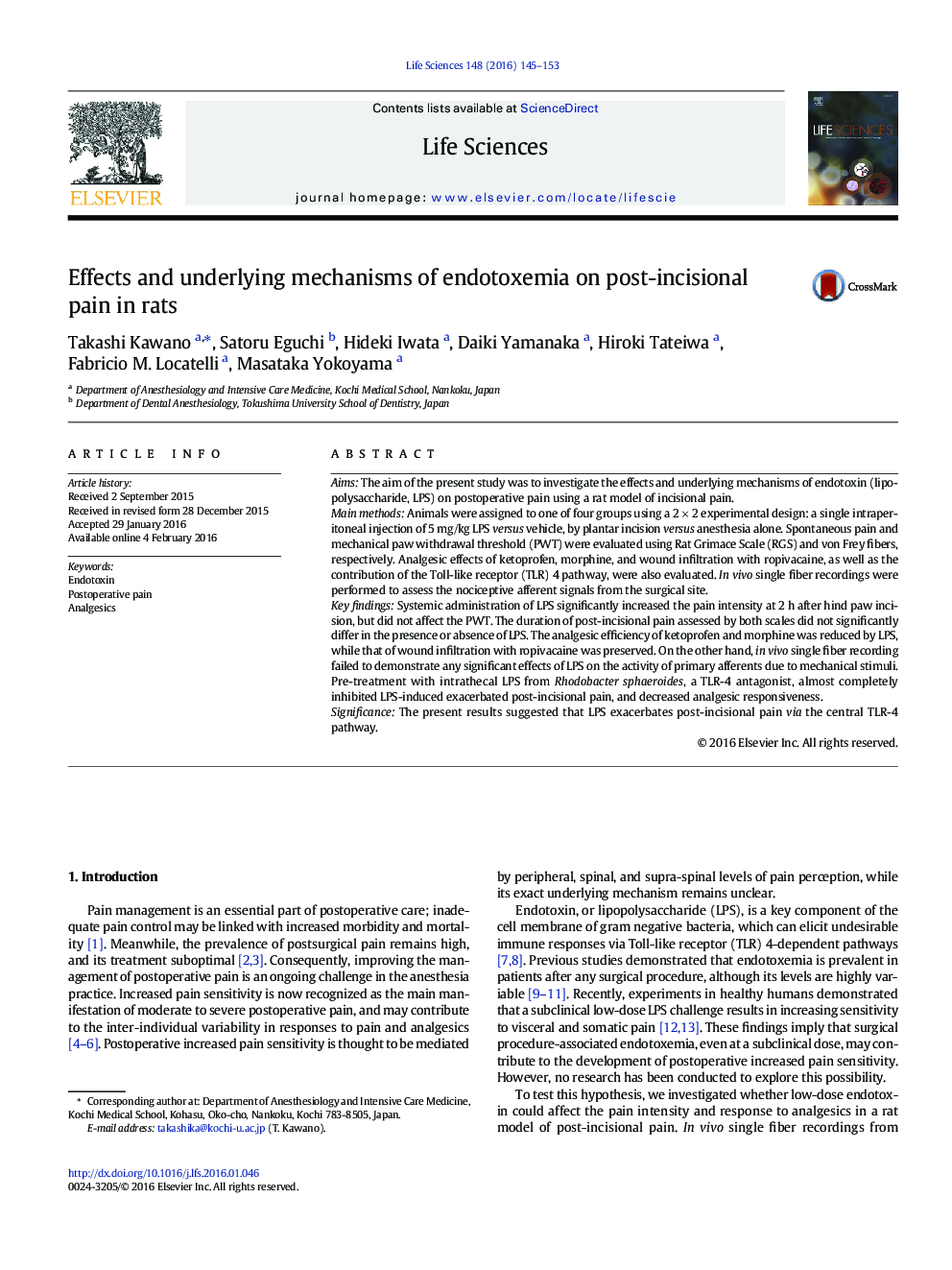| Article ID | Journal | Published Year | Pages | File Type |
|---|---|---|---|---|
| 2550748 | Life Sciences | 2016 | 9 Pages |
AimsThe aim of the present study was to investigate the effects and underlying mechanisms of endotoxin (lipopolysaccharide, LPS) on postoperative pain using a rat model of incisional pain.Main methodsAnimals were assigned to one of four groups using a 2 × 2 experimental design: a single intraperitoneal injection of 5 mg/kg LPS versus vehicle, by plantar incision versus anesthesia alone. Spontaneous pain and mechanical paw withdrawal threshold (PWT) were evaluated using Rat Grimace Scale (RGS) and von Frey fibers, respectively. Analgesic effects of ketoprofen, morphine, and wound infiltration with ropivacaine, as well as the contribution of the Toll-like receptor (TLR) 4 pathway, were also evaluated. In vivo single fiber recordings were performed to assess the nociceptive afferent signals from the surgical site.Key findingsSystemic administration of LPS significantly increased the pain intensity at 2 h after hind paw incision, but did not affect the PWT. The duration of post-incisional pain assessed by both scales did not significantly differ in the presence or absence of LPS. The analgesic efficiency of ketoprofen and morphine was reduced by LPS, while that of wound infiltration with ropivacaine was preserved. On the other hand, in vivo single fiber recording failed to demonstrate any significant effects of LPS on the activity of primary afferents due to mechanical stimuli. Pre-treatment with intrathecal LPS from Rhodobacter sphaeroides, a TLR-4 antagonist, almost completely inhibited LPS-induced exacerbated post-incisional pain, and decreased analgesic responsiveness.SignificanceThe present results suggested that LPS exacerbates post-incisional pain via the central TLR-4 pathway.
